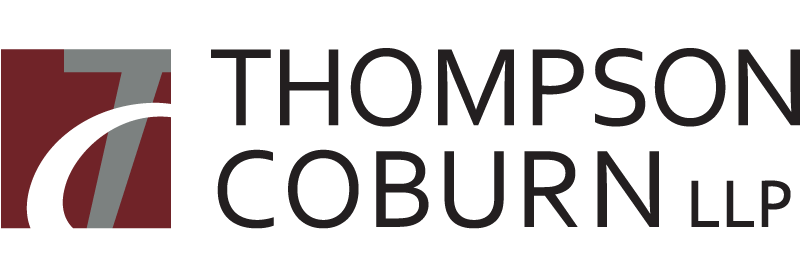Home > Insights > Publications > Important Update: Compliance Requirements for New California Workplace Violence Prevention Law Effective July 1, 2024

This is a friendly reminder that effective July 1, 2024, Section 4 of Senate Bill 533, signed into law last September, will amend the California Labor Code, specifically LC 6401.7 and 6401.9, to require covered employers to implement comprehensive measures to prevent workplace violence in addition to the employer's current injury and illness prevention program (“IIP”).
With July 1 quickly approaching, covered employers should begin taking measures as soon as possible to develop a Workplace Violence Prevention Plan, prepare a system for maintaining a violent incident log, and prepare policies and procedures for training and recordkeeping requirements.
Applicability
LC 6401.9(b)(2) applies to all employers, employees, and places of employment except:
- Health care facilities and other entities that remain covered by Cal/OSHA’s existing Workplace Violence Prevention in Health Care standards;
- Worksites with fewer than 10 employees working at any given time and that are not accessible to the public;
- Employees who telework from a location of their choosing that is not under their employer’s control; and
- Certain law enforcement agencies and facilities operated by the Department of Corrections and Rehabilitation.
Steps for Compliance
Step 1: Develop a Plan
To comply with the requirements of Section 6401.9(c) of the Labor Code by July 1, 2024, covered employers must first develop, implement, and maintain a written Workplace Violence Prevention Plan (“WVPP”) that at least includes the features enumerated in LC 6401.9(2)(a), summarized in most relevant part below:
a. The names or job titles of the persons responsible for implementing the plan and a clear description of each person’s role in such implementation;
b. Effective procedures to obtain the active involvement of employees and authorized employee representatives in developing and implementing the plan at least through their participation in identifying, evaluating, and correcting workplace violence hazards, designing and implementing training, and reporting and investigating workplace violence incidents;
c. Methods the employer will use to coordinate implementation of the plan with other employers, when applicable, to ensure that those employers and employees understand their respective roles;
d. Effective procedures for the employer to accept and respond to reports of workplace violence and to prohibit retaliation against any employee who makes such a report;
e. Effective procedures for employees to comply with the WVPP in a manner consistent with the employer’s IIPs mandated system for ensuring safe and healthy work practices;
f. Effective procedures to communicate with employees regarding workplace violence matters including reporting and investigative procedures and how employees will be informed of the results of investigations and any corrective actions taken;
g. Effective procedures to respond to actual or potential workplace violence emergencies including how employees will be alerted to the presence, location, and nature of the emergency, appropriate and feasible evacuation or sheltering plans, and how to obtain help;
h. Procedures to develop and provide required training;
i. Procedures to identify and evaluate workplace violence hazards including scheduled periodic inspections for the purpose of identifying unsafe conditions, and/or work practices, to be conducted when the plan is first established, after each workplace violence incident, and whenever the employer is made aware of a new or previously unrecognized hazard;
j. Procedures to correct workplace violence hazards in a timely manner consistent with the employer’s IIP procedures;
k. Procedures for post-incident response and investigation; and
l. Procedures to review the effectiveness of the plan and revise the plan as needed including procedures to obtain the active involvement of employees and authorized employee representatives in reviewing the plan at least: annually, when a deficiency becomes apparent, and after any work violence incident.
Step 2: Prepare to Maintain a Violent Incident Log
LC 6401.9(d) also requires employers to record information about every violent incident that occurs, including the response to the incident and any injuries in a violent incident log. The information in the log should be based on statements from employees and others who witnessed the incident, as well as investigative findings. Specifically, the log should include:
a. The date, time and location of the incident;
b. What type of violence was involved;
c. A detailed description of the incident;
d. Whether the perpetrator was a client or customer, family or friend of a client or customer, stranger with criminal intent, coworker, supervisor or manager, partner or spouse, parent or relative, or other perpetrator;
e. Details of the circumstances of the incident like whether the employee was completing usual job duties, working in poorly lit areas, rushed, working during a low staffing level, isolated or alone, unable to get help or assistance, working in a community setting, or working in an unfamiliar or new location;
f. Details regarding the location of the incident such as whether it occurred inside or outside of the workplace;
g. Details identifying the type of incident such as whether it was a physical attack with or without a weapon, the weapon used, whether the incident involved biting, choking, grabbing, hair pulling, kicking, punching, slapping, pushing, pulling, scratching, or spitting, whether the incident involved the threat of or actual sexual assault, including rape, attempted rape, physical displays, or any unwanted verbal or physical sexual contact, and whether the incident was an animal attack;
h. What the response to the incident was, including involvement of security or law enforcement, and actions taken to ameliorate the threat.
i. While the log must identify the name, job title, and date for the person completing the log, the log should not include personal identifying information that would allow identification of anyone involved in the incident, such as the person’s name, address, email, phone number, or Social Security number.
Step 3: Training and Recordkeeping
Employers must provide employees with training when the WVPP is first implemented and on an annual basis thereafter. This must allow for an interactive Q&A with an individual knowledgeable on the WVPP and include training on:
a. The employer’s WVPP, including how to obtain a copy of it and how to participate in its development and implementation;
b. The definitions and requirements of the law;
c. How to report concerns without fear of reprisal;
d. Workplace violence hazards specific to the employee’s jobs, corrective measures that have been implemented, how employees can seek assistance to prevent or respond to violence, and strategies for employees to avoid physical harm; and
e. The violent incident log described above in Step 2 and how to obtain a copy of all records.
If new hazards are identified, additional training must be provided to address them. Training records must be kept for at least one year and must include the dates, contents of the training, names and qualifications of the trainers, and names and job titles of everyone who attended the training. Training materials must be used and be appropriate for the vocabulary, education level, literacy, and language of the employees.
Records of workplace violence hazard identification, evaluation, and correction must be created and maintained for a minimum of five years.
Conclusion
SB 553 represents a critical shift in the legal landscape regarding workplace safety in California. It is imperative that all California employers take proactive steps to comply with this new law. By proactively addressing the requirements of SB 553, your business can ensure a safer workplace and mitigate potential legal risks. Thompson Coburn LLP is here to assist in developing and implementing a compliant WVPP, preparing compliant policies and procedures, conducting employee training, and addressing any legal questions or concerns. Please do not hesitate to contact your Thompson Coburn attorney to schedule a consultation or for any assistance. We look forward to assisting employers in this important compliance effort.
For more information on SB 553, refer to the full text of the law here or Cal/OSHA’s published FAQ page. Employers may also refer to Cal/OSHA’s model written WVPP but should take heed of their disclaimer that use of the model does not guarantee compliance with the law.
